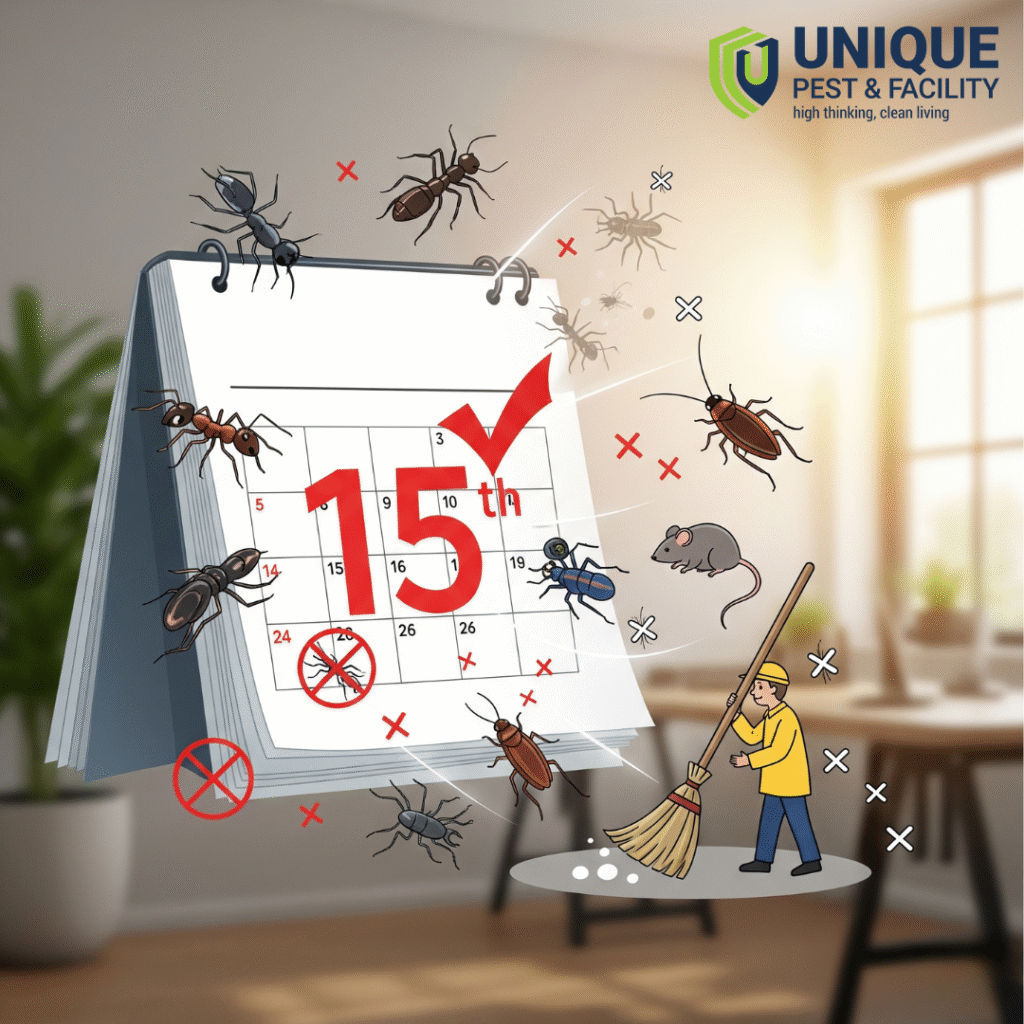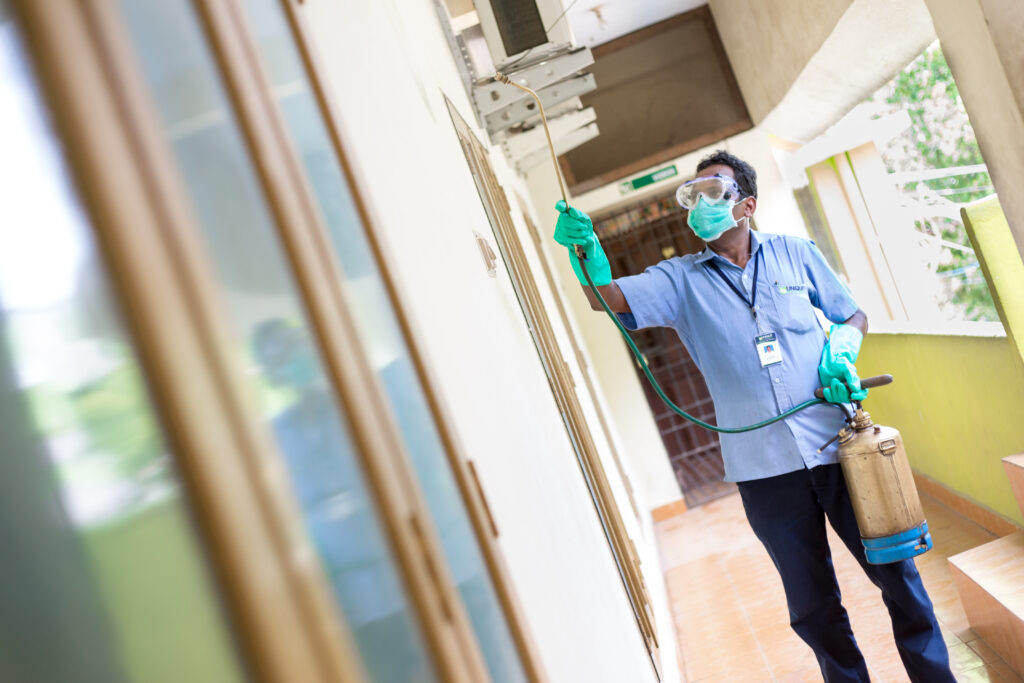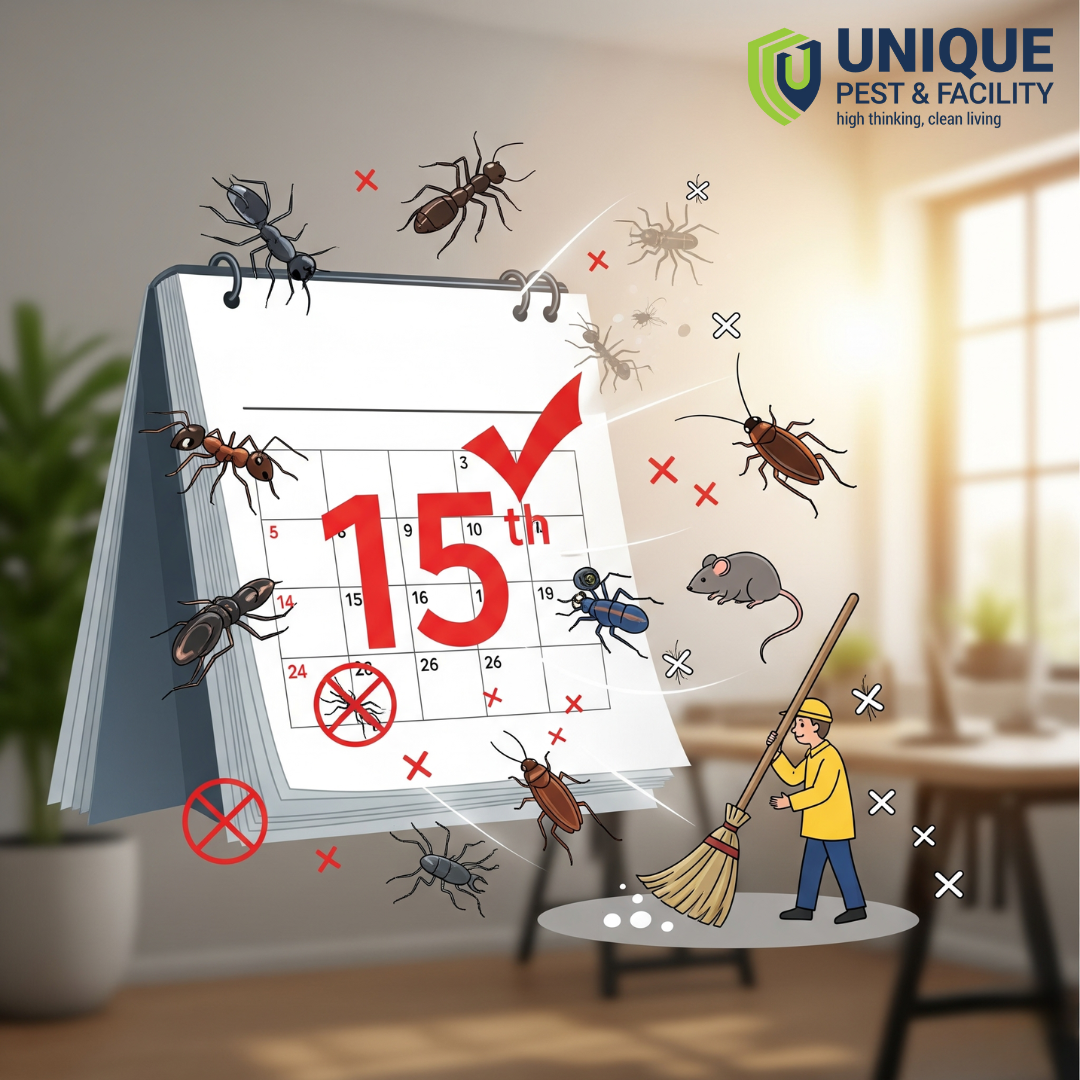It’s easy to think that a single pest control treatment will solve your problems for good. After all, if the initial application kills the visible pests, the issue must be resolved, right? Unfortunately, this is a common misconception. Many pests, like cockroaches, ants, and termites, operate on complex life cycles that a one-time treatment can’t completely disrupt.
what is the importance of follow-up treatments in pest management?
The answer lies in the science of pest control and the need for a comprehensive, ongoing strategy. A single treatment is just the first step. To achieve a truly pest-free environment, you must account for the eggs, larvae, and hidden populations that a single visit often misses. This blog will explain why follow-up treatments are essential for long-term protection and peace of mind.

What Are Follow-Up Treatments?
Follow-up treatments in pest control are a crucial component of a professional pest control service. They are not simply a repeat of the first visit but are a targeted, strategic part of a larger plan. These treatments are part of an Integrated Pest Management (IPM) approach, a holistic strategy that combines various methods to control pests in the most effective and least invasive way.
During a follow-up visit, a professional technician will assess the initial treatment’s effectiveness, check for signs of new pest activity, and apply targeted treatments to eliminate any remaining pests. This approach ensures that the entire infestation—including newly hatched eggs and pests in hard-to-reach areas—is addressed, preventing a quick return of the problem.
Why Follow-Up Treatments Are So Important
Follow-up treatments are the key to moving from temporary relief to a long-term solution. They offer several critical benefits that a one-off treatment simply cannot provide.
Breaks Pest Life Cycles
Pests like cockroaches, mosquitoes, and fleas reproduce at a rapid rate. Many initial treatments are designed to kill adult pests, but they may not be effective against eggs. These eggs are often protected and can hatch days or weeks after the initial application. Without a follow-up visit, a new generation of pests can emerge, restarting the infestation from scratch. Regular follow-up treatments are strategically timed to coincide with these hatching cycles, ensuring that new pests are eliminated before they can reproduce and become a problem.
Targets Hidden Pests
Pests are experts at hiding. They nest in cracks in your walls, behind appliances, in attics, and deep within furniture. While the initial treatment addresses the most obvious problem areas, it may not reach every last pest. Follow-up visits allow technicians to inspect and treat these hidden spaces, flushing out any stragglers and ensuring that the entire population is eradicated.
Prevents Re-Infestation
A single treatment provides a temporary barrier, but its effectiveness will fade over time. Weather, cleaning, and general wear and tear can degrade the treatment, leaving your home vulnerable to new pests entering from the outside. The importance of follow-up treatments in pest management becomes clear here, as they restore the protective barrier around your property, creating a continuous line of defense against future invasions. This is especially vital for homes located in areas with high pest pressure.

Monitors Effectiveness
A professional pest control service doesn’t just treat your home and leave. They monitor the situation. During a follow-up visit, the technician can see if the initial treatment was successful and identify any new or persistent problems. This monitoring process allows them to adjust the treatment plan as needed, using a different product or targeting a new area to ensure the problem is fully resolved.
Long-Term Protection & Customer Confidence
Investing in a regular follow-up schedule is an investment in your home’s long-term health and safety. It provides consistent protection against a wide range of pests, from common household invaders to seasonal pests that emerge during different times of the year. This proactive approach not only keeps your home pest-free but also gives you confidence in the long-term effectiveness of the service.
How Often Do You Need Follow-Ups?
The frequency of follow-up treatments varies depending on the type of pest, the severity of the infestation, and your property’s specific needs.
- Common Pests (Ants, Spiders, Cockroaches): For a general pest control plan, a quarterly (every three months) or bi-monthly schedule is often recommended. This aligns with the life cycles of most common pests and maintains a consistent protective barrier.
- Termites: Termite management often involves an annual inspection to detect and prevent new activity. If an active infestation is found, a more frequent schedule will be needed to monitor the effectiveness of the treatment.
- Bed Bugs: Bed bugs are notoriously difficult to eliminate. A single treatment is almost never enough. A series of follow-up treatments, typically spaced a few weeks apart, is crucial to kill newly hatched nymphs before they can mature and lay more eggs.
- Rodents: After an initial treatment to remove the rodent population, regular monitoring visits are essential to check bait stations and traps and ensure no new rodents have moved in.
For severe or persistent infestations, a pest control professional may recommend a more aggressive schedule until the problem is under control.
Final Thoughts
The difference between a one-time treatment and a complete pest management plan is simple: one provides temporary relief, while the other offers lasting protection. Understanding the importance of follow-up treatments in pest management is the key to achieving a truly pest-free home. They are a necessary investment that ensures the entire life cycle of the pest is broken, new infestations are prevented, and your home remains protected all year long.


